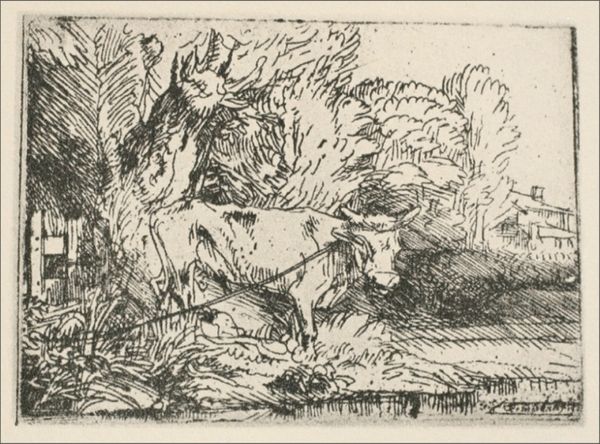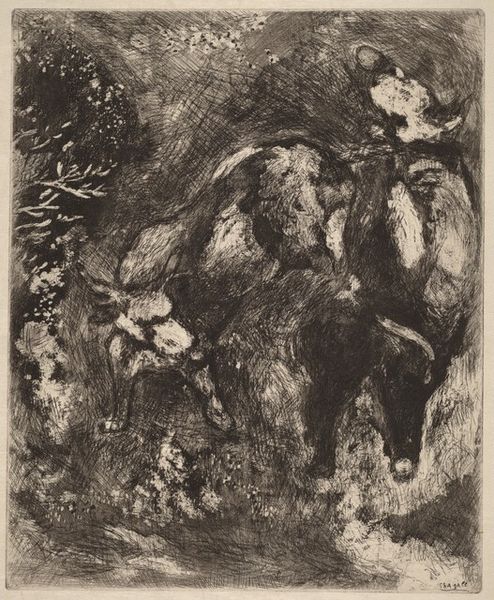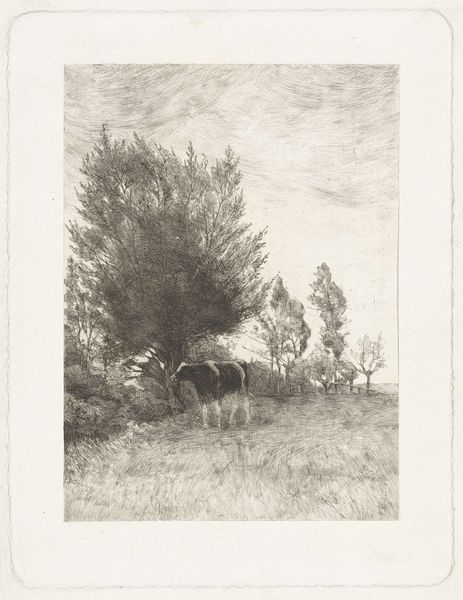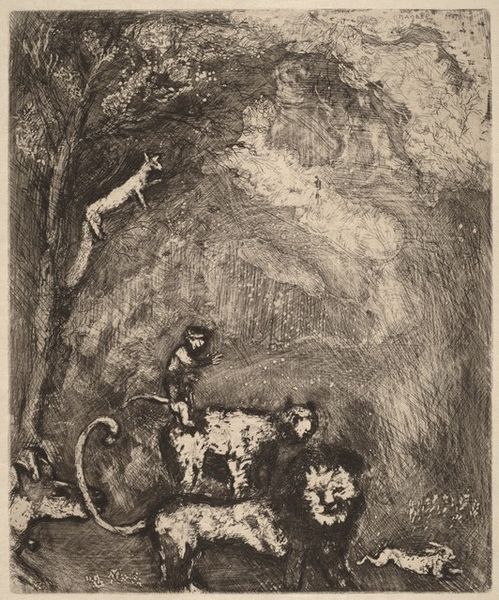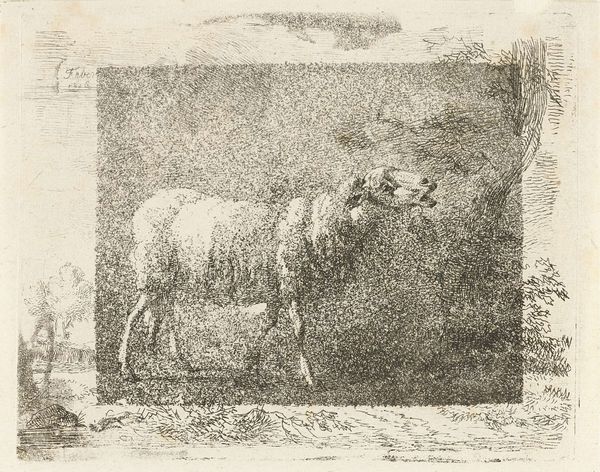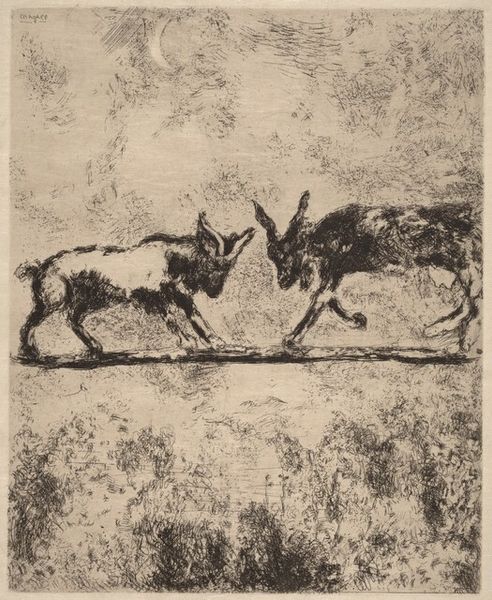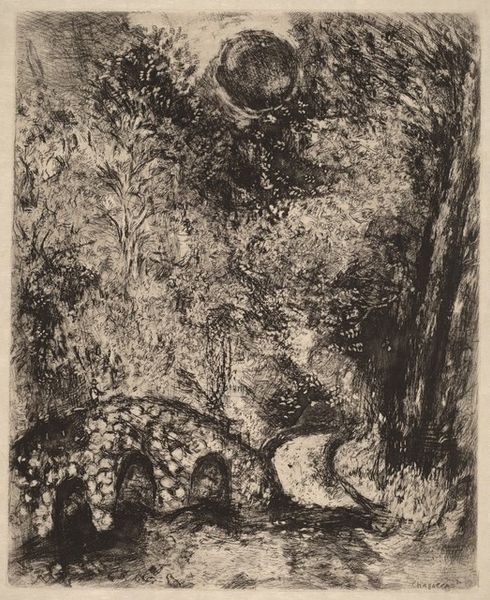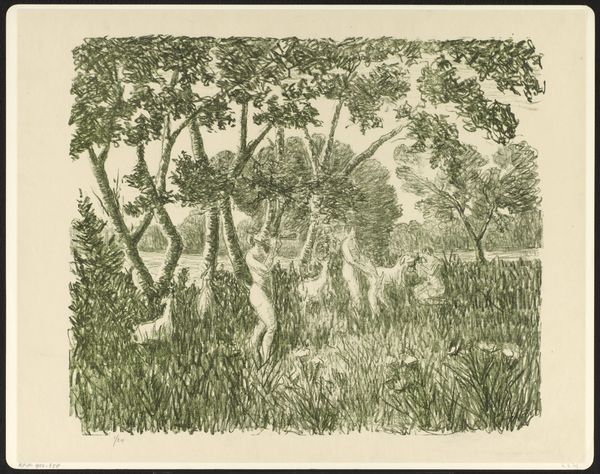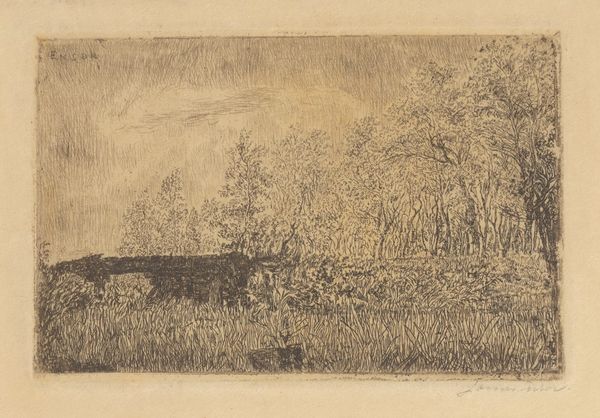
print, etching
#
cubism
# print
#
etching
#
landscape
#
figuration
Dimensions: sheet: 36.8 x 27.7 cm (14 1/2 x 10 7/8 in.)
Copyright: National Gallery of Art: CC0 1.0
Editor: Right, so here we have Picasso’s etching, L'Ane, or The Donkey, created between 1941 and 1942. It's got a sort of heavy, burdened feel to it, don't you think? All that dense cross-hatching. What strikes you about this piece? Curator: You nailed it – "burdened" is a great word. The donkey itself seems hemmed in, trapped almost, between that wiry fence and the thicket. Maybe a reflection of the times, wouldn't you say? Consider when it was made - during the Second World War. Editor: Absolutely, the historical context makes total sense. It feels claustrophobic, like the donkey is stuck. Do you think the cubist elements enhance that feeling? Curator: I do. Notice how the perspective is skewed, the form fractured? It's not just a picture of a donkey, it's about the idea of a donkey, the feeling of being a donkey, burdened, perhaps a little lost. Does that resonate with you? Editor: It definitely does. It’s like Picasso isn’t just showing us a donkey, but how the world feels, weighed down. Before looking at it, I had the simplistic idea that Picasso’s “blue period” captured the feeling of those times, I did not know other pieces, like this one, managed to translate those feelings of worry. Curator: It makes you wonder about the artist's state of mind when creating this piece. Art becomes a lens through which we can witness history. Editor: Exactly. It really brings home how an artist’s work is influenced by the world around them. I’ll definitely keep that in mind when analysing art in the future!
Comments
No comments
Be the first to comment and join the conversation on the ultimate creative platform.
